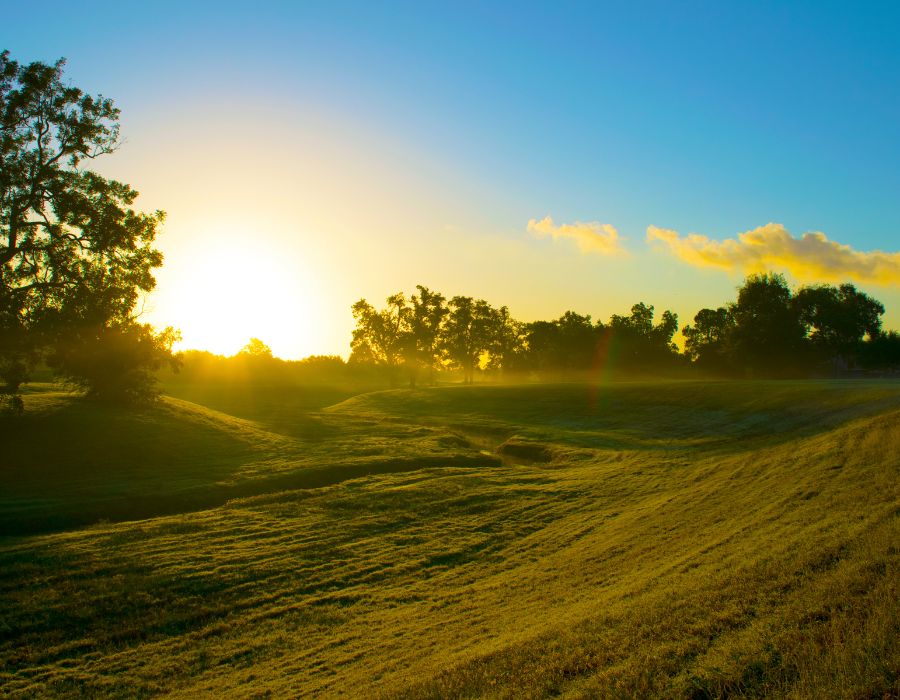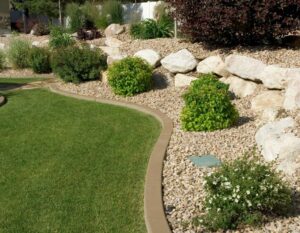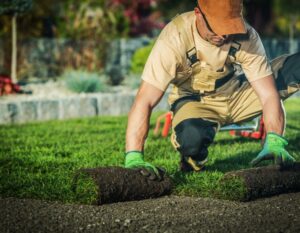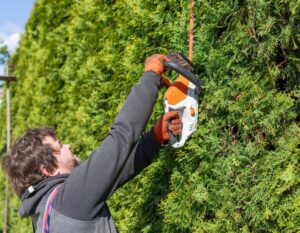Tree maintenance is essential for both residential and commercial properties, and understanding when to trim trees in Texas is crucial for the health, growth, and appearance of these natural assets. While timing for tree care can vary depending on the tree species, regional climate, and tree health status, following best practices helps maintain tree vitality, supports growth, and prevents potential hazards. Below, we cover the essential guidelines on when to trim trees in Texas, including special tree care tips for San Antonio, seasonal pruning schedules, and professional advice to ensure you’re caring for your trees properly.
When to Trim Trees in Texas: General Guidelines
In Texas, the best time to trim trees is typically during the late winter months, just before the onset of spring. This period—usually between January and March—ensures that trees are dormant and will experience minimal stress from the pruning process. The key benefits of winter pruning include:
- Reduced Stress on Trees: Pruning during dormancy causes less stress, allowing the tree to recover more efficiently.
- Improved Visibility of Tree Structure: With the absence of leaves, it’s easier to see branches and make better pruning decisions.
- Enhanced Disease Control: Many diseases and pests are less active in colder months, reducing the risk of infection at pruning sites.
However, there are certain tree species and conditions that may require different timing, especially in areas like San Antonio, where climate and species diversity play a role in tree care.
Tree Care Tips for San Antonio: Timing Based on Tree Type and Health
In San Antonio, where summer heat and occasional cold snaps shape the tree-growing environment, timing tree trimming properly helps to avoid issues like sun scald or disease spread. Here’s a closer look at specific types of trees and the best tree care tips for San Antonio trees:
1. Oak Trees
Oak Tree Maintenance in Texas, particularly in the San Antonio region, requires special care. Pruning oak trees during the late winter is best to prevent the spread of Oak Wilt, a deadly fungal disease. If an oak tree needs trimming outside the dormant season due to storm damage or safety concerns, it’s critical to seal the cuts with wound paint immediately to prevent exposure to the beetles that carry Oak Wilt spores.
2. Fruit Trees
Fruit Tree Pruning Schedule should align with the tree’s dormancy to encourage optimal fruit production. Pruning fruit trees in late winter ensures they channel energy into producing healthy fruit rather than recovering from pruning.
3. Evergreens and Non-Dormant Trees
For evergreens and some other Texas-native trees, light pruning can be done year-round. However, it’s still best to avoid heavy trimming in late spring and summer, as this could make them susceptible to sunburn, pest infestation, and disease.
Seasonal Pruning Guide for Texas Trees
Winter (December to February):
The prime time for most tree trimming in Texas, winter pruning allows trees to heal quickly in spring. Focus on removing deadwood, crossing branches, and structurally weak limbs.
Spring (March to May):
Early spring is a good time to inspect trees for broken branches but avoid trimming healthy branches extensively as trees are actively growing. Pruning in this season can interfere with growth and attract pests.
Summer (June to August):
If you must trim in summer, limit pruning to removing dead or damaged branches. In Texas, summer heat can be intense, and trimming can expose branches to excessive sunlight, potentially causing sunscald.
Fall (September to November):
Early fall pruning is generally discouraged in Texas because new cuts may invite fungal infections and pests. Instead, focus on post-storm cleanup, removing damaged or weak branches after severe weather events.
Tree Disease Prevention: Pruning for Health and Longevity
When you trim trees in Texas, doing so properly can be a critical preventive measure against disease. Tree pruning plays an essential role in improving air circulation, which minimizes fungal growth, and in eliminating diseased or infested branches before the infection spreads to the entire tree. Here are a few essential tree disease prevention tree care tips for San Antonio:
- Use Clean Tools: Clean and disinfect tools before trimming to prevent the transfer of disease from one tree to another.
- Avoid Pruning When Wet: Pruning in wet conditions can spread spores of fungi and bacteria, leading to infections.
- Remove Diseased Wood Carefully: Diseased branches should be removed carefully, ensuring they’re properly disposed of and not left near healthy trees.
By incorporating disease prevention practices into your regular tree care, you help promote overall tree health and resilience.
Storm Damage Repair and Tree Trimming
Texas storms can be intense, bringing high winds, heavy rain, and occasionally hail. These weather events often leave trees damaged, posing risks to structures and power lines. Proper trimming techniques reduce the likelihood of storm damage by reinforcing tree structure. Here’s how trimming trees helps prevent storm damage:
- Reduces Excess Weight: Removing heavy, excess branches decreases the likelihood of breakage during strong winds.
- Prevents Crossed Branches: Pruning crossing branches prevents them from weakening or injuring each other during storm movement.
- Increases Structural Integrity: By trimming branches that are weak or at risk of breaking, you help the tree withstand high winds without losing large limbs.
If storm damage does occur, assess trees promptly and trim any broken or hanging branches as soon as possible to maintain safety.
Fruit Tree Pruning Schedule: Maximizing Yield and Health
Fruit trees require specific care to ensure they produce high-quality fruit. In Texas, the fruit tree pruning schedule varies slightly depending on the species:
- Apple and Pear Trees: Prune in late winter before spring bloom to encourage abundant flowering, fruiting, and correct tree growth patterns.
- Peach and Plum Trees: Late winter or early spring pruning works best, as it supports healthy growth and controls branch density.
- Citrus Trees: Light pruning after the last frost in early spring ensures the tree has enough time to produce new growth in the growing season.
Proper pruning techniques, such as cutting branches at a slight angle just above a bud, promote healthy, productive growth in fruit trees.
Recognizing Signs of Unhealthy Trees in San Antonio
Understanding the signs of unhealthy trees is essential for knowing when to trim trees in Texas. Trees in San Antonio may exhibit symptoms that signal they need pruning or further care:
- Dead or Dying Branches: Limbs without leaves or discolored bark.
- Fungal Growth: Mushrooms at the tree’s base may indicate internal decay.
- Leaning Structure: A tree that begins leaning may be structurally compromised.
- Excessive Leaf Drop: Particularly outside of normal seasonal changes, this can be a stress sign.
Addressing these symptoms through targeted trimming and professional tree assessment can help extend the life of your trees.
Proper Trimming Techniques and Tree Trimming Tools
Using the correct trimming techniques and tools is crucial in maintaining tree health. Here are key tree care tips for San Antonio for effective tree pruning:
- Cut Outside the Branch Collar: This allows the tree to seal the wound more efficiently.
- Avoid Over-Trimming: Never remove more than one-quarter of the tree’s foliage in a single season.
- Use the Right Tools: Hand pruners, loppers, and pruning saws are essential; ensure they are sharp and well-maintained.
Professional vs. DIY Tree Care in Texas
Determining whether to handle tree trimming yourself or hire a professional largely depends on the tree’s size, location, and health status. While DIY trimming may be feasible for small trees and minor pruning tasks, large trees, complex trimming, and storm damage repairs are best handled by professionals. Professional arborists in Texas have the knowledge and equipment to handle tree care safely and effectively. They are aware of the tree care tips for San Antonio ensuring tree health and safety in line with local regulations.
Frequently Asked Questions
Q: What are the signs that a tree in San Antonio needs trimming?
Signs include dead or broken branches, fungal growth, overgrown or crossing limbs, and branches obstructing pathways or power lines. Monitoring for these signs and scheduling timely trimming can prevent disease spread and improve overall appearance and safety.
Q: How does trimming trees help prevent storm damage?
Trimming reduces excess weight on branches, clears weak or vulnerable limbs, and prevents crossing branches from causing internal damage, which strengthens the tree’s resistance to high winds and other storm impacts.
Conclusion
Knowing when to trim trees in Texas, particularly in regions like San Antonio, is essential for ensuring tree health, preventing disease, and minimizing storm damage. By following a seasonal pruning guide, maintaining proper trimming techniques, and recognizing when professional care is needed, Texas property owners can keep their trees strong, healthy, and beautiful year-round. Proper tree maintenance not only boosts curb appeal but also contributes to a safer, more resilient landscape.





